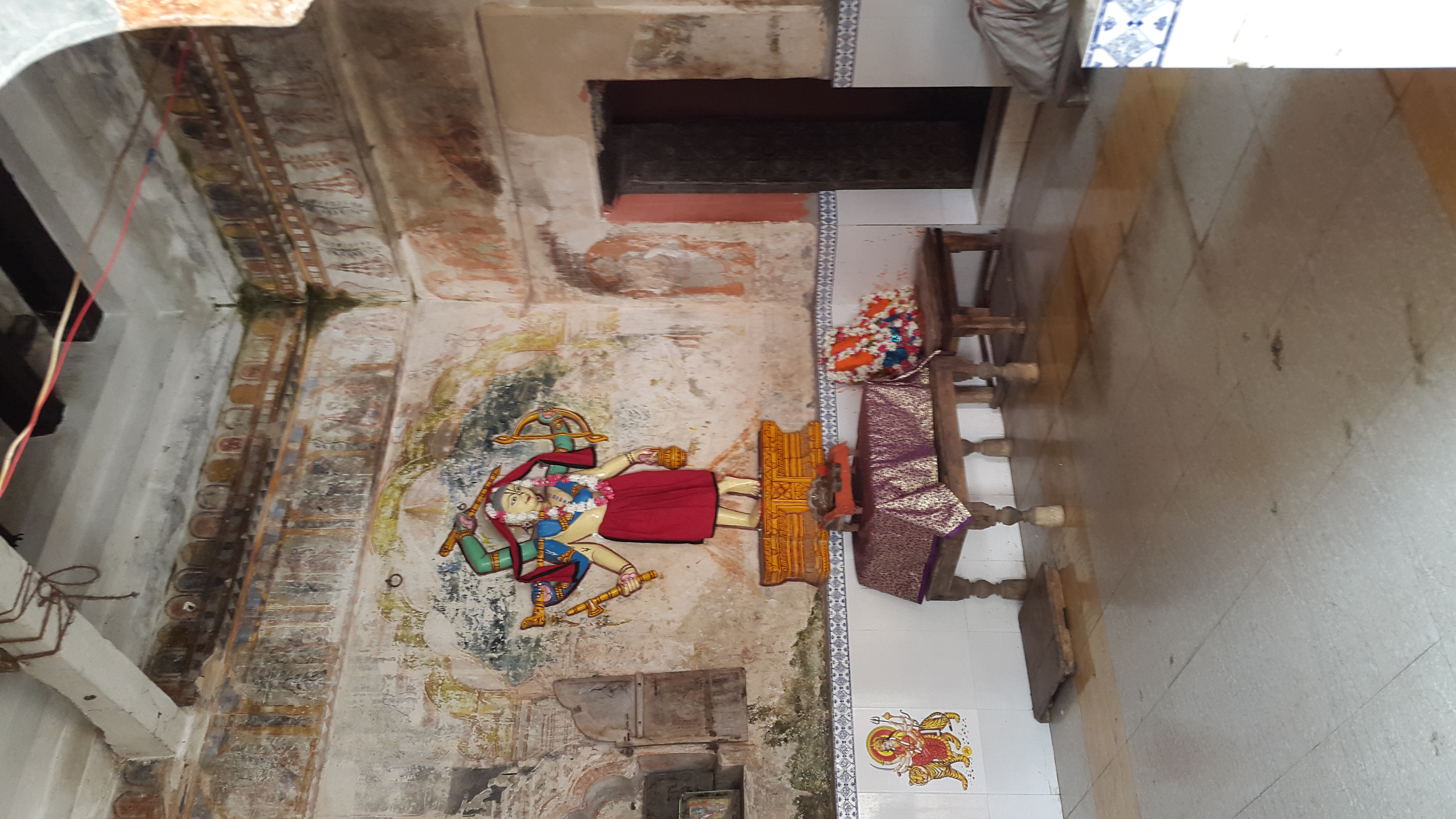|
Acharyas
In Indian religions and society, an ''acharya'' (Sanskrit: आचार्य, IAST: ; Pali: ''ācariya'') is a preceptor and expert instructor in matters such as religion, or any other subject. An acharya is a highly learned person with a title affixed to the names of learned subject. The designation has different meanings in Hinduism, Buddhism and secular contexts. ''Acharya'' is sometimes used to address an expert teacher or a scholar in any discipline, e.g.: Bhaskaracharya, the expert mathematician. Etymology The Sanskrit phrase ''Acharam Grahayati Acharam Dadati Iti Va'' means ''Acharya'' (or teacher) is the one who teaches good conduct to one's students. A female teacher is called an ''achāryā,'' and a male teacher's wife is called an ''achāryāni'' In Hinduism In Hinduism, an ''acharya'' is a formal title of a teacher or guru, who has attained a degree in Veda and Vedanga. Prominent acharyas in the Hindu tradition are as given below : *Adi Sankaracharya *Raman ... [...More Info...] [...Related Items...] OR: [Wikipedia] [Google] [Baidu] |
Vajracharya
A vajrācārya (vajra + acharya, Tib. རྡོ་རྗེ་སློབ་དཔོན་, ''dorje lopön'', Wyl. ''rdo rje slob dpon,'' Jp. “kongō ajari” 金剛阿闍梨) is a Vajrayana Buddhist master, guru or priest. It is a general term for a tantric master in Vajrayana Buddhist traditions, including Tibetan Buddhism, Shingon, Bhutanese Buddhism, Newar Buddhism. Tibetan Buddhism In Tibetan Buddhism, Dorje Lopön is a title given to high-level religious leaders who preside over Tantra, tantric rituals and Tibetan Tantric Practice, initiations. Dorje is the Tibetan equivalent of the Sanskrit vajra and therefore the term appears frequently in Tibetan Buddhist terminology relating to Vajrayana. A Dorje Lopön is usually well educated and trained in tantric practice, and is therefore a well respected figure. They might be the heads of monasteries or spiritual communities. Newar Buddhism Bajracharyas are a married priestly class among the Newar people, Newar commu ... [...More Info...] [...Related Items...] OR: [Wikipedia] [Google] [Baidu] |
Adi Sankara
Adi Shankara ("first Shankara," to distinguish him from other Shankaras)(8th cent. CE), also called Adi Shankaracharya ( sa, आदि शङ्कर, आदि शङ्कराचार्य, Ādi Śaṅkarācāryaḥ, lit=First Shankaracharya, ), was an Indian people, Indian Vedanga, Vedic scholar and teacher (''acharya''), whose works present a harmonizing reading of the ''sastras'', with liberating knowledge of the self at its core, synthesizing the Advaita Vedanta teachings of his time. The title of Shankaracharya, Shankracharya, used by heads of the amnaya monasteries is derived from his name. Due to his later fame, over 300 texts are attributed to his name, including commentaries (''Bhāṣya''), introductory topical expositions (''Prakaraṇa grantha'') and poetry (''Stotra''). However most of these are likely to be by admirers or pretenders or scholars with an eponymous name.W Halbfass (1983), Studies in Kumarila and Sankara, Studien zur Indologie und Iranistik, ... [...More Info...] [...Related Items...] OR: [Wikipedia] [Google] [Baidu] |
Acharya KundaKunda
In Indian religions and society, an ''acharya'' (Sanskrit: आचार्य, IAST: ; Pali: ''ācariya'') is a preceptor and expert instructor in matters such as religion, or any other subject. An acharya is a highly learned person with a title affixed to the names of learned subject. The designation has different meanings in Hinduism, Buddhism and secular contexts. ''Acharya'' is sometimes used to address an expert teacher or a scholar in any discipline, e.g.: Bhaskaracharya, the expert mathematician. Etymology The Sanskrit phrase ''Acharam Grahayati Acharam Dadati Iti Va'' means ''Acharya'' (or teacher) is the one who teaches good conduct to one's students. A female teacher is called an ''achāryā,'' and a male teacher's wife is called an ''achāryāni'' In Hinduism In Hinduism, an ''acharya'' is a formal title of a teacher or guru, who has attained a degree in Veda and Vedanga. Prominent acharyas in the Hindu tradition are as given below : *Adi Sankaracharya *Raman ... [...More Info...] [...Related Items...] OR: [Wikipedia] [Google] [Baidu] |
Vallabhacharya
Vallabhacharya Mahaprabhu (1479–1531 CE), also known as Vallabha, Mahaprabhuji and Vishnuswami, or Vallabha Acharya, is a Hindu Indian saint and philosopher who founded the Krishna-centered PushtiMarg sect of Vaishnavism in the Braj(Vraj) region of India, and the Vedanta philosophy of Shuddha Advaita (Pure Non-dualism). He is the Jagadguru Acharya and Guru of the Pushti Marg bhakti tradition and Suddhadwait Brahmavad (Vedant Philosophy), which he founded after his own interpretation of the Vedanta philosophy. Vallabhacharya was born in a Telugu Tailang Brahmin family that had been currently residing in Varanasi, who escaped to Champaran of Chhattisgarh state while expecting shri Vallabha, expecting a Muslim invasion in Varanasi, during the late 15th century. The name Vallabha means the beloved or lover, and is a name of Vishnu and Krishna. Vallabhacharya studied the Vedas, Upanishads, Puranas, Shat Darshan as a child, then travelled throughout the Indian subco ... [...More Info...] [...Related Items...] OR: [Wikipedia] [Google] [Baidu] |
Chaitanya Mahaprabhu
Chaitanya Mahaprabhu (; born Vishvambhar Mishra) was a 15th-century Indian saint who is considered to be the combined avatar of Radha and Krishna by his disciples and various scriptures. Chaitanya Mahaprabhu's mode of worshipping Krishna with ecstatic song and dance had a profound effect on Vaishnavism in Bengal. He was also the chief proponent of the Vedantic philosophy of Achintya Bheda Abheda Tattva. Mahaprabhu founded Gaudiya Vaishnavism ( the Brahma-Madhva-Gaudiya Sampradaya). He expounded Bhakti yoga and popularized the chanting of the Hare Krishna Maha-mantra. He composed the '' Shikshashtakam'' (eight devotional prayers). Chaitanya is sometimes called Gauranga or Gaura due to his molten gold–like complexion. His birthday is celebrated as Gaura-purnima. He is also called Nimai due to him being born underneath a Neem tree. Life ''Chaitanya'' means "one who is conscious" (derived from Chetana, which means "Consciousness"); ''Maha'' means "Great" and '' ... [...More Info...] [...Related Items...] OR: [Wikipedia] [Google] [Baidu] |
Vajrayana
Vajrayāna ( sa, वज्रयान, "thunderbolt vehicle", "diamond vehicle", or "indestructible vehicle"), along with Mantrayāna, Guhyamantrayāna, Tantrayāna, Secret Mantra, Tantric Buddhism, and Esoteric Buddhism, are names referring to Buddhist traditions associated with Tantra and "Secret Mantra", which developed in the medieval Indian subcontinent and spread to Tibet, Nepal, other Himalayan states, East Asia, and Mongolia. Vajrayāna practices are connected to specific lineages in Buddhism, through the teachings of lineage holders. Others might generally refer to texts as the Buddhist Tantras. It includes practices that make use of mantras, dharanis, mudras, mandalas and the visualization of deities and Buddhas. Traditional Vajrayāna sources say that the tantras and the lineage of Vajrayāna were taught by Śākyamuni Buddha and other figures such as the bodhisattva Vajrapani and Padmasambhava. Contemporary historians of Buddhist studies meanwhile argue t ... [...More Info...] [...Related Items...] OR: [Wikipedia] [Google] [Baidu] |
Krishn
Krishna (; sa, कृष्ण ) is a major deity in Hinduism. He is worshipped as the eighth avatar of Vishnu and also as the Supreme god in his own right. He is the god of protection, compassion, tenderness, and love; and is one of the most popular and widely revered among Indian divinities. Krishna's birthday is celebrated every year by Hindus on Krishna Janmashtami according to the lunisolar Hindu calendar, which falls in late August or early September of the Gregorian calendar. The anecdotes and narratives of Krishna's life are generally titled as ''Krishna Leela''. He is a central character in the ''Mahabharata'', the ''Bhagavata Purana'', the ''Brahma Vaivarta Purana,'' and the '' Bhagavad Gita'', and is mentioned in many Hindu philosophical, theological, and mythological texts. They portray him in various perspectives: as a god-child, a prankster, a model lover, a divine hero, and the universal supreme being. Quote: "Krsna's various appearances as a divine ... [...More Info...] [...Related Items...] OR: [Wikipedia] [Google] [Baidu] |
Sandipani
Sandipani (), sometimes rendered Sāndīpana, is the guru of Krishna and Balarama in Hinduism. He is regarded to have educated them regarding all the Vedas, the art of drawing, astronomy, gandharva veda, medicine, training elephants and horses, and archery. Legend The ''Bhagavata Purana'' relates the following story regarding Sandipani: While staying as students at the residence of Sandipani, the brothers Krishna and Balarama, and their friend, Sudama, mastered every single lesson, although only having been instructed in each once. Upon the rapid completion of their studies, they persuaded their teacher to ask for the preceptor’s ''dakṣiṇā'' (a type of honorarium to one's guru) of his own choosing. Sandipani asked for the restoration of his child, who had disappeared in the ocean at Prabhasa. The two brothers travelled to Prabhasa and found that the son had been snatched away by a being named Śaṅkhāsura (). Krishna rescued his son and they returned him to their prece ... [...More Info...] [...Related Items...] OR: [Wikipedia] [Google] [Baidu] |
Theravada
''Theravāda'' () ( si, ථේරවාදය, my, ထေရဝါဒ, th, เถรวาท, km, ថេរវាទ, lo, ເຖຣະວາດ, pi, , ) is the most commonly accepted name of Buddhism's oldest existing school. The school's adherents, termed Theravādins, have preserved their version of Gautama Buddha's teaching or ''Buddha Dhamma'' in the Pāli Canon for over two millennia. The Pāli Canon is the most complete Buddhist canon surviving in a classical Indian language, Pāli, which serves as the school's sacred language and ''lingua franca''.Crosby, Kate (2013), ''Theravada Buddhism: Continuity, Diversity, and Identity'', p. 2. In contrast to '' Mahāyāna'' and '' Vajrayāna'', Theravāda tends to be conservative in matters of doctrine ('' pariyatti'') and monastic discipline (''vinaya''). One element of this conservatism is the fact that Theravāda rejects the authenticity of the Mahayana sutras (which appeared c. 1st century BCE onwards). Modern Ther ... [...More Info...] [...Related Items...] OR: [Wikipedia] [Google] [Baidu] |
Vassa
The ''Vassa'' ( pi, vassa-, script=Latn, sa, varṣa-, script=Latn, both "rain") is the three-month annual retreat observed by Theravada practitioners. Taking place during the wet season, Vassa lasts for three lunar months, usually from July (the Burmese month of Waso, ) to October (the Burmese month of Thadingyut ).Vassa at About.com In English, Vassa is often glossed as Rains Retreat or Buddhist Lent, the latter by analogy to the Christian Lent (which Vassa predates by at least five centuries). For the duration of Vassa, monastics remain in one place, typically a |
Ajahn
Ajahn ( th, อาจารย์, , ) is a Thai-language term that translates as "professor" or "teacher". It is derived from the Pali word '' ācariya'' and is a term of respect, similar in meaning to the Japanese ''sensei''. It is used as a title of address for high school and university teachers, and for Buddhist monks who have passed ten ''vassa'' – in other words those who have maintained their monastic precepts unbroken for a period of ten years. The term Luang Por, "Venerable father", signifies an Ajahn of acknowledged seniority in Thai Buddhism. Buddhism According to the '' Vinaya,'' any properly ordained monk can become an ' after ten ''vassa'' in the robes, thus a Thai monk becomes ''ajahn.'' A senior monk may bear the honorific title ''phra ajahn'' ( th, พระอาจารย์,"venerable monk"), or in more informal situations, ''than ajahn'' ( th, ท่านอาจารย์,"venerable monk"). Some famous ''ajahns'' are: * Ajahn Amaro * Ajahn ... [...More Info...] [...Related Items...] OR: [Wikipedia] [Google] [Baidu] |
Indian Religions
Indian religions, sometimes also termed Dharmic religions or Indic religions, are the religions that originated in the Indian subcontinent. These religions, which include Hinduism, Jainism, Buddhism, and Sikhism,Adams, C. J."Classification of religions: Geographical", ''Encyclopædia Britannica'', 2007. Retrieved 15 July 2010 are also classified as Eastern religions. Although Indian religions are connected through the history of India, they constitute a wide range of religious communities, and are not confined to the Indian subcontinent. Evidence attesting to prehistoric religion in the Indian subcontinent derives from scattered Mesolithic rock paintings. The Harappan people of the Indus Valley civilisation, which lasted from 3300 to 1300 BCE (mature period 2600–1900 BCE), had an early urbanized culture which predates the Vedic religion. The documented history of Indian religions begins with the historical Vedic religion, the religious practices of the early Indo-Ir ... [...More Info...] [...Related Items...] OR: [Wikipedia] [Google] [Baidu] |

.jpg)


_(8697431158).jpg)



.jpg)